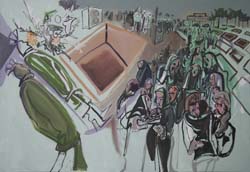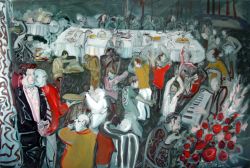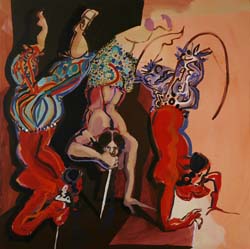
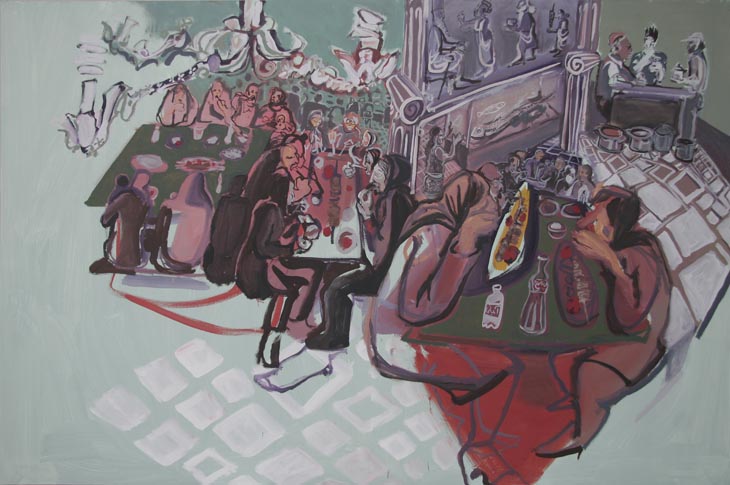


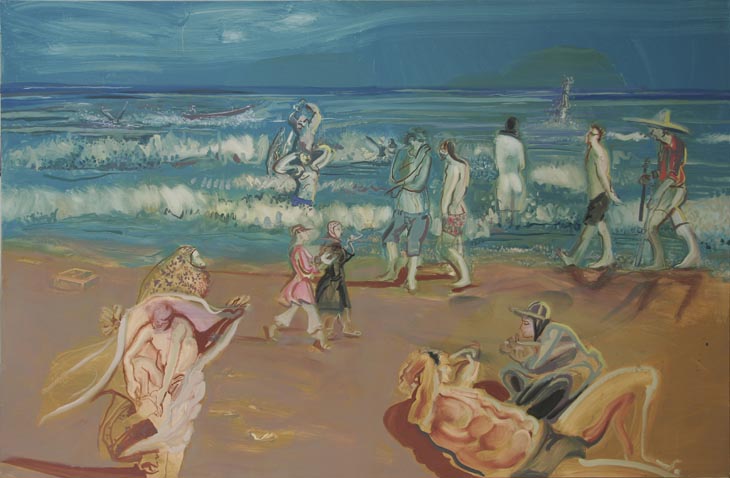
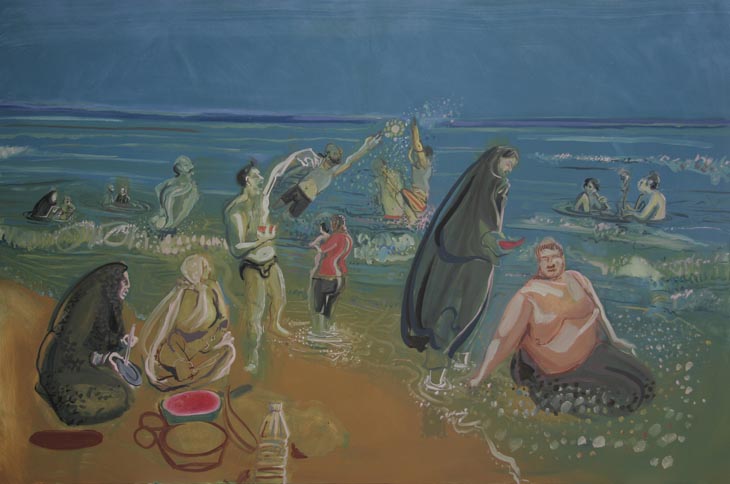
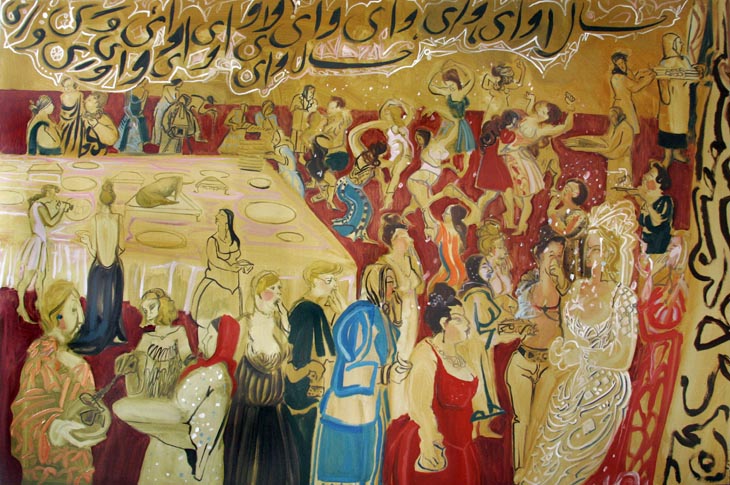


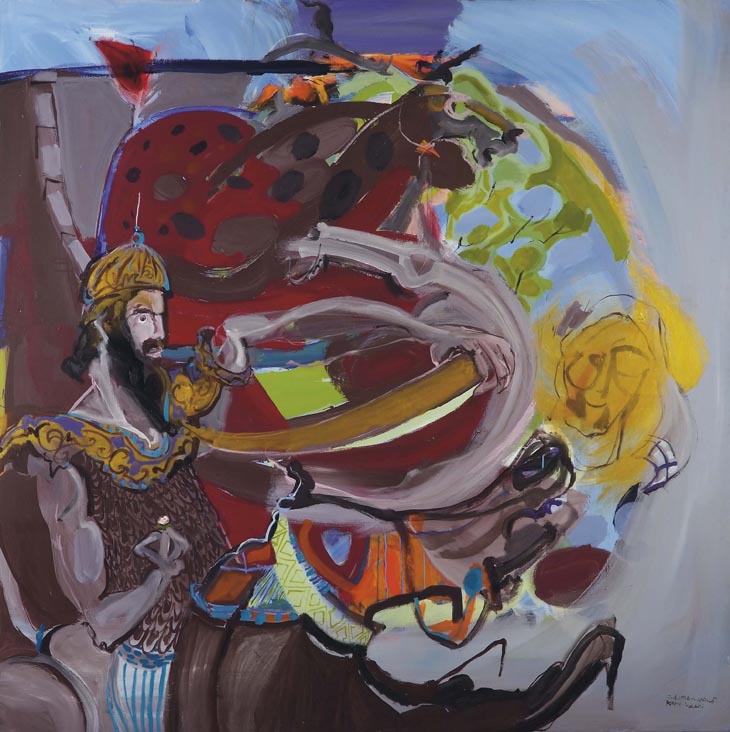

Rokni Haerizadeh
Iranian funerals are elaborate affairs, often lasting several days and incorporating a multitude of ceremonies which extend from the highly staged to the deeply private. Haerizadeh’s Typical Iranian Funeral illustrates the contrast in these varied approaches to bereavement. In the canvas on the left, a meal is shared between the deceased close family and friends, a gathering of the nearest and dearest tellingly structured around divisive table arrangements. The civility of this custom is juxtaposed to an image of public ritual, with bodies on full display, grieved over by mourners-for-hire and strangers, as rites are proclaimed over graveside loudspeakers. In
observing the paradoxes of everyday life, Haerizadeh creates a provocative and sympathetic portrayal of a society that’s fundamentally flawed, and infinitely endearing and relatable.
Haerizadeh executes this scene with the leisure of daydream, his fluid gestures and frothy brush marks capturing the sun-bleached languor of holiday idle.
Rokni Haerizadeh uses painting as a means to critique the hypocritical aspects of his culture. Haerizadeh’s Typical Iranian Wedding ironically describes the rigmarole of getting hitched, Persian style. Presented as a mammoth diptych, men and women are physically separated into two panels, which when coupled form a grand hall divided by a curtain. On the men’s side guests carouse with abandon amongst over-flowing buffet tables, live music, and lush flower decorations; while the ladies’ is a much more Spartan affair. Aside from the grotesquerie fashion show of primped up wives and girlfriends, there’s only one measly turkey and the lights are left on so as not encourage excessive party spirit. Haerizadeh rendersthese scenes with a satirist’s relish, considering every detail as a deliciously cruel and too accurate caricature.
This painting’s title, Razm, is the Farsi word for fighting: considered in epic poetry, along with love, to be one of the two great heroic activities. Haerizadeh often takes inspiration from Persia’s rich literature – such as Ferdowski’s The Book of Kings or Rumi’s poetry and prose works – using its grand themes as allegories for contemporary Iranian social issues. In Iranian custom, rather than having a war, one soldier from each side was selected to partake in a duel to the death as a means to settle disagreements. Haerizadeh paints this scene with all the energy of a heated battle. On the left of the canvas, the protagonist strides his horse with masculine nonchalance, holding a diamond ring, his damsel’s prize. Smiting his enemy with a single blow, the right side of the canvas descends into violent abstraction, the fallen rider rendered in a cacophony of blurs and patterning, delineated by faint skeletal gestures and heavy cartoon outlines. Dancing with swords is a traditional custom throughout the Arab world, usually performed by women as part of a wedding ceremony. Haerizadeh delivers this scene with the vivid exoticism of Matisse or Gauguin, his bold colours, heavy outlines, and opulent patterning re-appropriating the tradition of ‘orientalism’. Haerizadeh uses this association with extrinsic idealisation to envision a burlesque parody of the morality of women: his acrobatic belly dancers, chained to the stage, have transformed into a nefariously devious troupe. In conventional ritual the sword represents the honour of the husband, which the girl on the right has ‘accidentally’ dropped.

